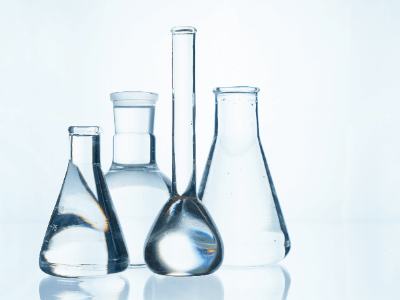What Is a Flask?

A flask is a container for temporarily storing chemicals used primarily in chemical experiments or for mixing, reacting, heating, or distilling chemicals.
The main types of flasks include triangular flasks, Nas flasks, and female flasks, with the triangular flask being the most famous because it is used in elementary school science experiments.
Generally, these flasks are made of glass to prevent reactions with the chemicals in the container. Other materials such as metal and synthetic resin are also available but are less commonly used.
Uses of Flasks
Flask uses include chemical reactions, heating, and distillation, and the appropriate flask is selected depending on the application.
Like beakers, they can be used to store chemicals, but they are not suitable for long-term storage and can only be used for a few hours. A triangular flask with a co-stopper can be used to seal the entrance with a stopper, allowing the chemicals to be mixed with a wave of the hand. Magnetic stirrers can be used to mix chemicals with automatic stirring.
Features of Flasks
There are numerous types of flasks with different characteristics.
1. Triangular Flask
This is an orthodox flask. The entrance is narrow and the girth widens at the bottom to form a triangular shape. Since the entrance is smaller than that of a beaker, it prevents evaporation from the surface of the liquid and prevents the liquid from splashing out, making it easy to hold by hand and go down.
2. Eggplant Flask
The bottom of the flask is spherical, resembling the vegetable eggplant. It is often used in distillation tests such as rotary evaporators because it is easy to scrape out solid compounds and viscous liquids remaining in the flask from solvent distillation.
3. Female Flask
This is a weighing flask with a nearly triangular body and a 15 cm long, narrow entrance tube at the top. The volume is marked on a line at the top of the tube, and when liquid is added to the marked line, the volume indicated on the body can be weighed. Since the weighing error is 0.25 mL or less, it is used for dilution of chemicals with purified water.
4. Cassia Flask
It has a longer neck than the female flask. It has a scale on the neck.
5. Round Bottom Flask
This is a spherical flask with a mortised neck. The glass is thick-walled to withstand impact and pressure from chemical reactions.
6. Sakaguchi Flask
The top part has a long neck and the bottom part is hemispherical and is used for reciprocating shaking culture. It has a high airflow rate and prevents droplets from rising during shaking. However, the special shape makes it difficult to clean inside.
7. Swan-Neck Flask
The neck of the flask is long and bent into an S-shape. This structure does not stop steam or air from entering or leaving the flask and prevents dust and other contaminants from entering the flask.
8. Kjeldahl Flask
This is a long-necked type of Nas flask. It is used when chemicals are decomposed inside to cause reactions.
9. Branch Flask
This flask is used for distillation by incorporating it into a distillation apparatus. A glass tube protrudes from the long neck of the round-bottom flask.
10. Two-Branch Flask
A two-necked flask has two openings for the insertion of a thermometer and the feeding of chemicals. Three-necked flasks with three mouths and four-necked flasks with four mouths are also available depending on the application.
11. Separable Flask
Separable flasks are flasks with only the body. The mouth part is attached with a separable cover or clamp. It is easy to clean and the number of mouthfuls can be changed by changing the cover.
12. Flask for Soxhlet Extractor
This flask is used for the Soxhlet extractor.
Types of Flasks
There are several types of triangular flasks.
1. Triangular Flask With a Stopper
This is a triangular flask with a glass stopper that is fitted into the neck of the flask. The contents can be mixed by shaking the flask vigorously by hand.
2. Triangular Flask With Baffle
This flask has a projection inside and is often used for culturing microorganisms. Aeration of the liquid medium is increased by swirling and shaking. Cotton stoppers and silicone stoppers prevent contamination and ensure aeration.
3. Iodine Flask
A triangular flask with a co-stopper has a structure that stores liquid above the stopper and the mortise and tenon. It is used for the determination of iodine value, etc.
4. Buchner Flask
A thick-walled triangular flask with a short glass tube protruding from the neck. It is mainly used for suction filtration, and the inside of the flask can be depressurized by connecting the tube to a vacuum source such as a vacuum pump.